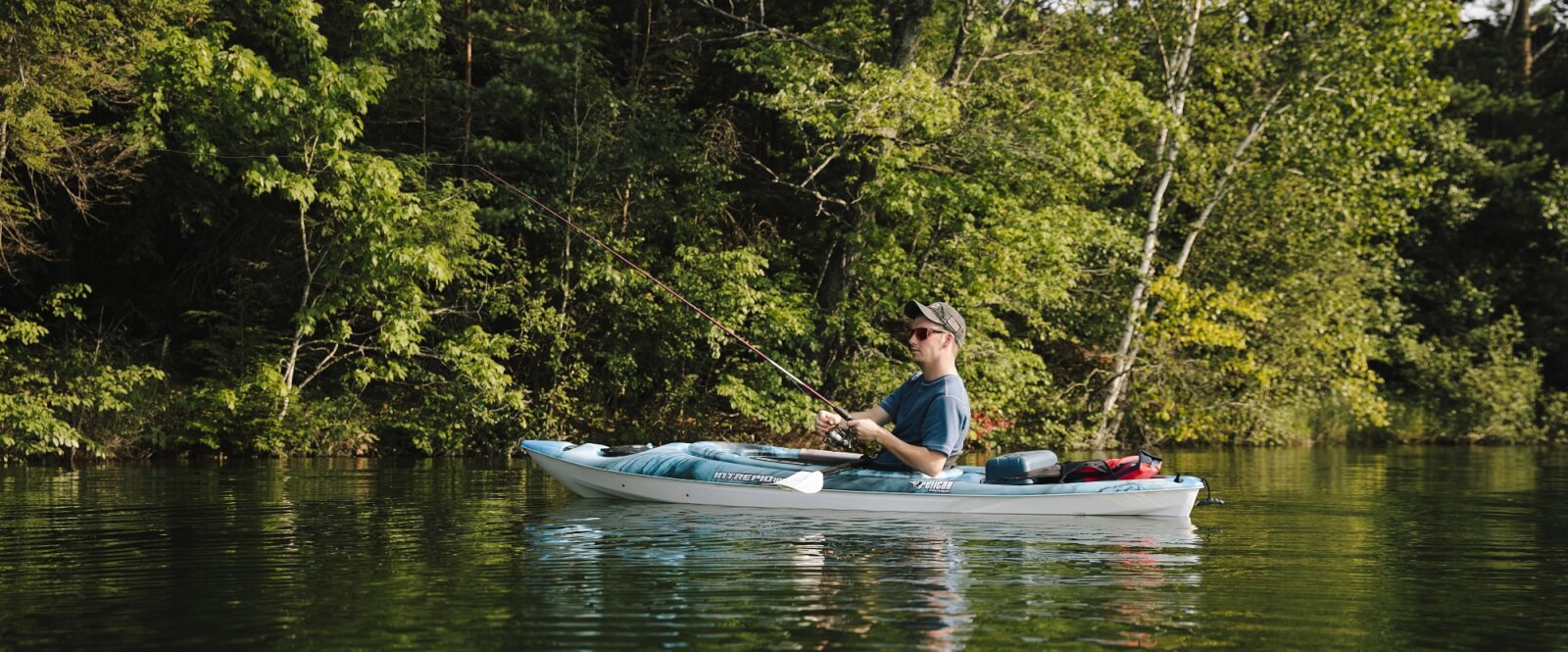Articles
Out See Go –
By Chris Engle, contributor –
Take a few blind steps within Otsego County and you’re bound to get a wet foot. With dozens of public lakes and the headwaters of five major trout streams, there’s no shortage of water to explore as an angler — whether that’s by boat, canoe, kayak, wading or walking. If you’re headed to the Gaylord area for your own fish-centric family trip, here are five things to know about what Otsego County has to offer anglers of every level of experience, enthusiasm and interest. Welcome, get settled in, then get outdoors!
Looking for lakes? Get started with your free Lakes Brochure!
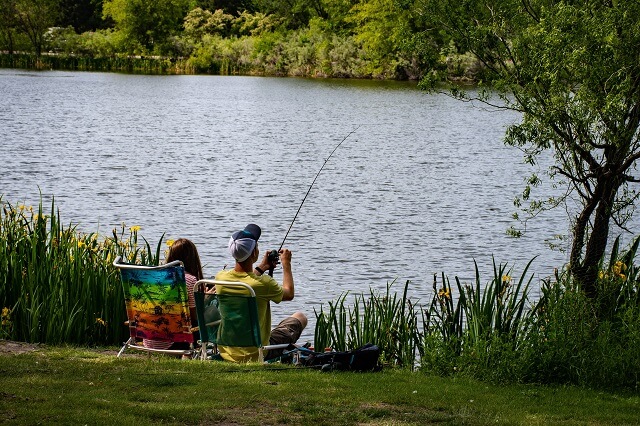
1. Otsego by the numbers
1,500 feet: Peak elevation in Otsego County – that’s more than 900 feet above lakes Michigan and Huron, meaning all the rain that hits the ground here (or gurgles up from underground springs) flows down and away into Northern Michigan’s many rivers.
120 feet: Maximum depth of Heart Lake, near Waters, only 60 acres in size but it’s the county’s deepest, making it an ideal fishery for rainbow trout and smelt.
3.1 million: Number of walleye fry stocked in Otsego Lake in 2017. Another combined 1 million were planted in 2016 and 2018.
33: Number of Master Angler catches reported in Otsego County for 2018, including a 45-inch pike speared on Opal Lake, a 31.25-inch walleye caught on Otsego Lake, and a 15.5-inch brook trout caught on Ford Lake, along with numerous monster bass and panfish.
Ready to start fishing? Buy your license online HERE!
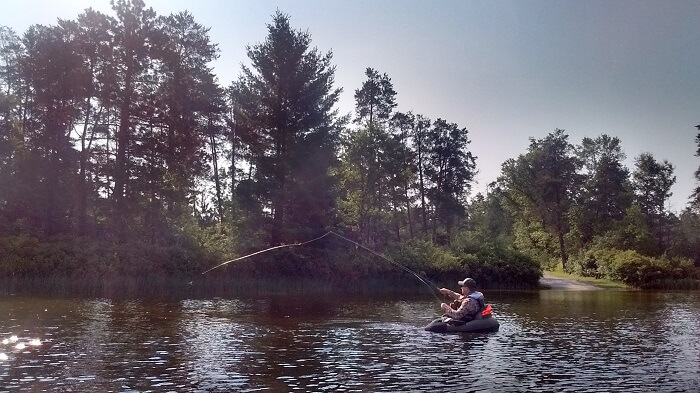
2. Catch a living fossil
There’s no doubt Otsego Lake is home to monsters (note the aforementioned 31-inch walleye) but it is one of only a handful of places in all of Michigan where you can catch a true living fossil: the lake sturgeon. Started in the mid-1980s, the lake’s sturgeon stocking program began as an experiment to study how fast sturgeon could grow in an inland environment. The fingerling fish grew fast, hitting 40 inches and beyond in just a dozen years, meaning a tightly controlled but unique fishery could be established. Since then, small plantings of excess fish from the Black River hatchery in Onaway have helped sustain this special fishery, and anglers can keep a single, 50-inch sturgeon during the season which runs July 16 to March 15.

3. Go small for big fish
You don’t need to stick to the big water to catch monsters. When late-summer sun drives up water temps, trout are forced to find cooler, shaded water in upstream stretches. Even in spots where a sprightly angler can leap the river in a single bound, monster brookies, browns and rainbows can lurk in undercut banks or among submerged timber. Wear dark clothing and be sneaky in your approach, and you might just be rewarded with a trophy – or a bunch of small ones is always a possibility, too! If fishing doesn’t pan out, the blueberry and raspberry bushes are in full fruit so you definitely won’t go hungry.
Don’t worry if you had to leave your boat at home. Check out our rentals page!
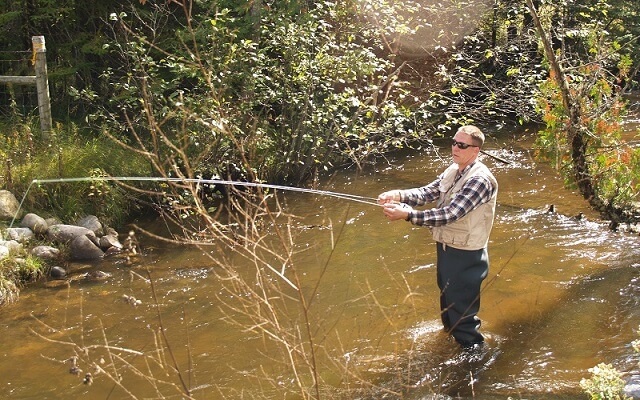
4. Fish early or late for best odds
These glorious summer days bring out skiers, tubers, wake boarders, wave runners and boaters of all kinds and can make midday waters a pretty noisy, choppy place for a fisherman to be. On top of that, direct sun sends fish to deeper water where they hunker down and wait until things cool off. This means your best odds for good fishing comes early morning and late evening – about the first 90 minutes after sunup and before sunset – when fish of all species will be most active, not to mention the lake most peaceful. Take advantage of light morning or evening winds to cast topwater plugs or surface flies for bass and panfish, or to bobber fish without interference from boat wake. This way, you’ll be on your way off the lake with your limit of fish before the first speedboat shows up!
Stay up-to-date on all things Gaylord with our weekly e-blasts. Subscribe HERE!
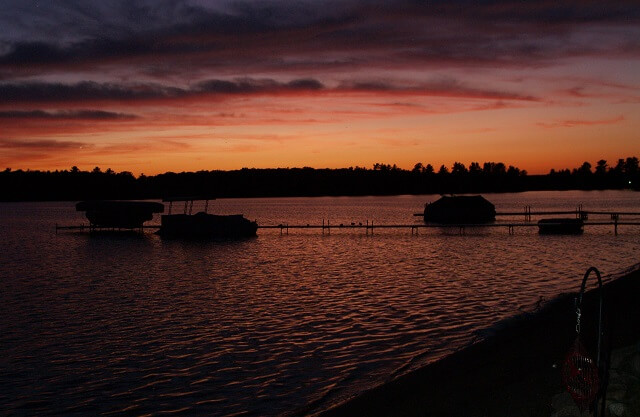
5. Be careful what you fish for
Following are two of my favorite stories to tell friends I take out fishing here.
The first takes place in the 1980s, when a fisherman working the shallows of Bradford Lake near Waters came across an odd shape lying on the soft bottom. Scooping the object up in his net, he held in his hands a small, streamline bomb complete with fins and presumably packed with explosives. As it turned out, the “dummy” practice shell had likely fallen off a National Guard jet during training exercises at the nearby bomb range.

The other story takes place in 1945 when physicist Arthur Compton met fellow scientist J. Robert Oppenheimer on the shores of Otsego Lake County Park to work out a vexing concern of the Manhattan Project: “There they discussed their problem – the possibility that a mere test of the (atom) bomb could completely disintegrate the entire world,” read a story in a September 1955 Gaylord Herald Times. After further discussion – which I like to think involved the two men casting into the lake as they talked – they concluded Earth’s abundance of nitrogen and hydrogen just wasn’t enough to ignite during a nuclear test, killing us all. Whew.
It’s time to plan your fishing trip! Request your free Visitor Guide today!
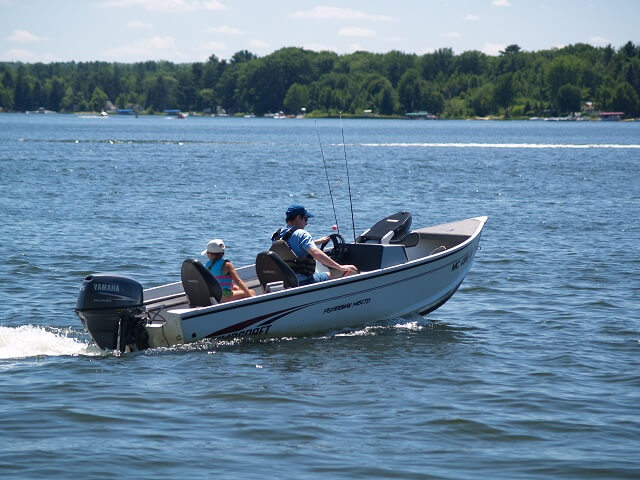
Good luck, tight lines, and thanks for visiting (and fishing) Otsego County!

